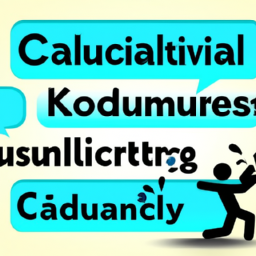Exploring the Generational Factors: Unraveling the Blame Game in Today's Digital Culture
Subtitle: Exploring the Multi-Generational Factors Shaping Today’s Digital Landscape

Introduction:
In recent years, social media has come under scrutiny for its impact on society, mental health, and social relationships. While many people are quick to blame social media platforms, it is essential to delve deeper and understand the underlying cultural changes that have paved the way for this phenomenon. This article explores the multi-generational factors that have contributed to the rise of social media and examines whether the blame should lie solely on these platforms.
The Role of Cultural Changes:
The pervasive influence of social media does not exist in isolation. It is a reflection of the larger sociocultural shifts that have been occurring for decades. From changes in family structures and economic factors to evolving values and taboos, society has been undergoing significant transformations that have laid the groundwork for social media’s influence. It is essential to acknowledge these factors to gain a comprehensive understanding of the current landscape.
Looking at Macroscopic Events:
To truly grasp the origins of social media’s cultural impact, it is crucial to consider the broader socio-political events that have shaped our world. Far-reaching events like the Vietnam War, Reaganomics, and downsizing mania from the 1980s may have played a more significant role than the recent emergence of social networks. Instead of solely blaming figures like Mark Zuckerberg, it is worth examining the impact of influencers like Lee Iacocca, Carl Icahn, and Jack Welch.
The Role of Personal Responsibility:
While understanding the root causes is essential, there is also a need to address personal agency and responsibility. One argument suggests that knowing the reasons behind our behaviors does not absolve us of the responsibility to change them. By focusing on prevention and discouraging excessive use of social media, individuals can take control of their own actions and make conscious choices.
Examining Therapeutic Approaches:
Some argue that blaming the root causes without taking action is akin to years of therapy without real change. However, it is important to recognize that therapeutic methods, such as Cognitive Behavioral Therapy (CBT), aim to align behaviors with desired outcomes. Investigating the underlying reasons behind behaviors is an established approach to fostering change. Therefore, it may be more productive to understand the factors driving social media’s impact rather than dismissing them.
The Influence of Social Media:
Despite the debate surrounding the causal arrow, there is an undeniable influence of social media on society today. The advent of state-driven influence campaigns, oversaturation of negative content, and the race to the bottom on our worst impulses all contribute to the negative aspects of social media. The scale of the effect cannot be disregarded, as it surpasses the concerns previously raised about television’s impact on behavior and news consumption.
Sustainability and Designing Alternatives:
As society grapples with the dangers of social media, it becomes crucial to consider sustainable alternatives. The focus should shift from optimizing for engagement and ad revenue to designing systems that prioritize connectedness, happiness, and the well-being of users. This requires a collective effort to rethink revenue models and challenge the current consumption-driven culture.
Conclusion:
While social media has become a significant influence in today’s world, it is vital to recognize that it is not the sole cause of social collapse or mental health crises among teenagers and young adults. By understanding the underlying cultural changes and larger socio-political events, we can gain valuable insight into the complexities of this issue. Moving forward, a combination of personal responsibility, comprehensive research, and a reevaluation of technological advancements is necessary to shape a more sustainable digital landscape.
Disclaimer: Don’t take anything on this website seriously. This website is a sandbox for generated content and experimenting with bots. Content may contain errors and untruths.
Author Eliza Ng
LastMod 2024-01-10